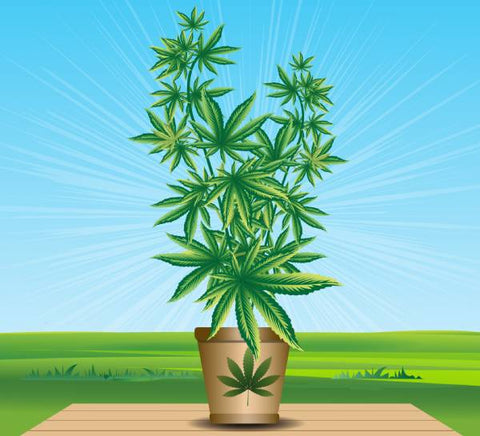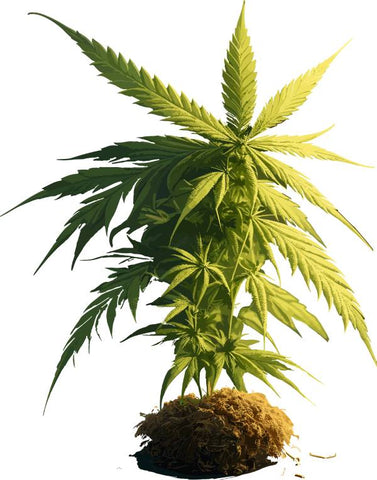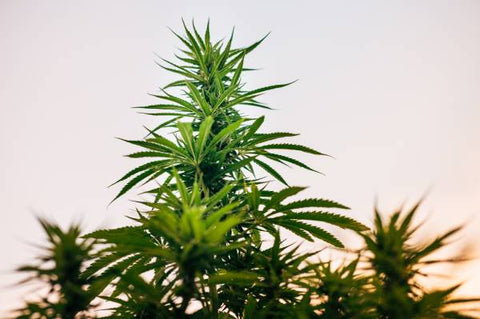Best price on the market

When to plant marijuana: the perfect conditions
Growing marijuana, whether for personal use, medicinal use, or research, is an art that requires not only knowledge and skill, but also precise timing. The decision of when to plant marijuana is crucial to the success of the harvest. This choice directly impacts the development of the plant, its health, and the quality and quantity of its flowers.
Marijuana, like any other plant, needs specific conditions to flourish. These conditions vary significantly between indoor and outdoor crops. Choosing the right time to plant not only ensures optimal growth but also protects plants from climatic adversities and pest or disease problems in marijuana .

Key Factors in Determining When to Plant
The success of growing marijuana depends largely on understanding and taking advantage of environmental and climatic factors. These factors determine not only when to plant marijuana, but also how to do it to maximize harvest potential. Below, we detail the most relevant aspects:
- Temperature : Marijuana thrives in a specific temperature range. For outdoor crops, the ideal time to plant is usually spring, when the frosts have passed and daytime temperatures are mild. Indoor marijuana plants can be more flexible regarding the time of year, as long as proper climate control is maintained.
- Sunlight : Light is a crucial factor for the growth of marijuana. Outdoors, plants require a sufficient amount of direct sunlight, ideally 12 to 15 hours a day. This requirement dictates that the best time to plant is when the days begin to lengthen, usually after the spring equinox. Indoors, artificial light should be adjusted to mimic these natural cycles.
- Humidity and Precipitation : Excessive humidity can be harmful, especially in the early phases of growth. In regions with marked rainy seasons, it is important to avoid these times to reduce the risk of fungal diseases. In indoor crops, humidity can be controlled to create the ideal environment.
- Soil Quality : Soil preparation is essential before planting. Outdoors, you should consider the time of year that allows you to work the soil so that it is in the best possible condition. Indoors, a suitable substrate is selected that can remain consistent throughout the year.
- Cultivation Cycle Duration : Depending on the variety of marijuana, cultivation cycles may vary. Some varieties require more time to flower, which is an important factor when deciding when to plant, especially outdoors where you depend on seasonal cycles.
- Regional Considerations : Each region has its own climatic particularities. What works in one area may not be appropriate in another. It is essential to research and understand local conditions before deciding when to plant marijuana outdoors.

When to Plant Marijuana Outdoors
Planting marijuana outdoors is an art that synchronizes with the rhythms of nature. The success of the harvest depends on understanding and respecting the signals that the weather and the seasons offer. Below is a detailed analysis of when to plant marijuana outdoors, considering climatic and temporal factors.
- Season Consideration : Spring is generally the best time to start an outdoor crop. This period is characterized by an increase in the duration of daylight and warmer temperatures, which stimulates the vegetative growth of marijuana. It is essential to wait until the last frost of the season has passed to avoid damage to young plants.
- Day Length : Marijuana is a photoperiodic plant, which means that its flowering cycle is regulated by the length of the days. Planting after the spring equinox ensures a progressive increase in the amount of light, favoring vegetative growth before the flowering phase that is induced when the days begin to shorten after the summer solstice.
- Ideal Temperature : Temperatures should be warm enough to promote good growth, but not so high that they stress the plants. A temperature range between 20°C and 30°C during the day is ideal. The nights should be cooler, but not cold.
- Frost Risk : A crucial consideration is the risk of late frosts. Even a light frost can be fatal to young plants. Therefore, it is important to know the average last frost dates in the region and plan accordingly.
- Humidity and Precipitation : While plants need water to grow, too much humidity can be harmful. Heavy rainy seasons can increase the risk of fungal diseases. Therefore, it is important to consider the region's rainfall pattern when deciding when to plant.
- Adaptation to the Region : Each region has its climatic and seasonal peculiarities. Growers must adapt their planting practices to these local conditions. For example, in warmer regions, it may be possible to plant earlier in the spring, while in colder areas, it may be necessary to wait until late spring or early summer.
- Types of Plants : Some varieties of marijuana are more resistant to certain climatic conditions than others. Choosing a variety suitable for the local climate can be a decisive factor in the success of the crop.
The Ideal Time to Plant Marijuana
Determining when it is time to plant marijuana is crucial to ensuring a healthy and productive crop. This decision is based on a deep understanding of ideal climate conditions and plant growth cycles. Below, we explore these key aspects:
Ideal Climatic Conditions
- Temperature : Marijuana grows best in a warm climate, with daytime temperatures ranging between 20°C and 30°C. Night temperatures should be lower, but not extremely cold.
- Sunlight : For outdoor growing, the amount of direct sunlight is vital. The plant needs about 12-15 hours of light per day for optimal growth.
- Humidity : A humidity level of 40-60% is ideal for growing marijuana. Planting should be avoided during heavy rainy seasons to reduce the risk of fungal diseases.
Marijuana Growth Cycles
- Vegetative Phase : During this phase, the plant needs many hours of light (ideally more than 13 hours a day). This phase occurs best in the spring and summer months, when the days are longer.
- Flowering Phase : At this stage, the plant requires longer periods of darkness (12 hours of light and 12 hours of darkness). This occurs naturally towards the end of summer and during the fall.
Time of Year for Sowing
- Outdoor : In the northern hemisphere, planting usually begins after the spring equinox, when daylight hours begin to increase. This usually occurs in late March or early April. In the southern hemisphere, this period would be around September.
- Indoor : Under controlled lighting and temperature conditions, marijuana can be planted indoors at any time of the year. However, it is important to simulate the ideal outdoor conditions for each growth phase.
Adaptation to Local Conditions
- Regional Variations : Depending on the geographic region, ideal planting conditions may vary. Growers should be aware of the particularities of their local climate.
- Strain Selection : Some marijuana strains are more suited to certain climatic conditions than others. Selecting a variety that is well adapted to the local climate can significantly influence the success of the crop.

Indoor Cannabis Growing : When to Start
Growing marijuana indoors offers the advantage of complete environmental control, meaning growers can start growing at any time of the year. However, to maximize efficiency and harvest quality, it is important to consider several factors, especially regarding environmental control and light cycles. Below are some key tips on when to plant marijuana indoors:
Environmental control
- Temperature and Humidity : Maintaining a controlled environment is essential for indoor growing. The ideal temperature during the day should be between 20°C and 30°C, and slightly lower at night. The relative humidity should be approximately 40-60%.
- Ventilation : Adequate ventilation is crucial to preventing problems such as mold and mites. Make sure your grow space has good airflow.
Light Cycles
- Vegetative Phase : During this phase, plants require between 16 and 20 hours of light per day. This phase lasts approximately 4-8 weeks, depending on the variety and the desired size of the plant.
- Flowering Phase : To initiate flowering, plants need a light cycle of 12 hours of light and 12 hours of darkness. This phase lasts between 8 and 12 weeks, depending on the variety.
Crop Planning
- Continuous Cycle : In an indoor environment, you can plan a continuous growing cycle, starting new plants in the vegetative phase while others are in the flowering phase.
- Time of Year : Although you can start at any time, some growers prefer to start their crop at specific times of the year to take advantage of natural conditions, such as higher humidity in winter or warmer temperatures in summer, which can help reduce growing costs. heating and humidification.
Energy and Cost Considerations
- Artificial Lighting : Artificial light can be a big expense when growing indoors. Some growers prefer to start their crops at times of year when energy costs are lower.
- Energy Efficiency : The use of LED lights can significantly reduce energy consumption and operating costs.
Flexibility and Customization
- Adaptability : Indoor cultivation allows great adaptability and customization of the growth cycle. You can experiment with different times and conditions to find what works best for your plants.
- Specific Strains : Some marijuana varieties may be more suitable for indoor growing due to their size or light requirements.

Practical Tips: When and How to Plant Marijuana
The process of planting marijuana goes beyond simply choosing the right season; It involves a series of careful steps that begin with germination and end with planting. Below is a practical guide that covers these crucial aspects:
Preparation for Germination
- Seed Selection : Start with quality seeds, preferably from a trusted supplier. The choice of variety will depend on your preferences and growing conditions.
- Germination Method : There are several methods to germinate seeds, such as the wet paper towel method or planting them directly in the substrate. Keep the seeds in a warm, dark place until they germinate.
Germination
- Germination Time : Seeds usually take between 24 hours and a week to germinate. It is crucial to maintain a humid and warm environment during this period.
- Transplanting into Small Pots : Once the seeds have germinated and the cotyledons appear, carefully transfer them to small pots with quality substrate.
Seedling Phase
- Seedling Care : Provide seedlings with sufficient light, but avoid direct sunlight or excessive intensity of artificial light. Keep the substrate moist, but not saturated.
- Transplanting into Larger Pots : When the seedlings have developed several true leaves, you can move them to larger pots to allow for greater root growth.
Choosing the Time to Plant
- Outdoors : Outdoors, wait until the danger of frost has passed and night temperatures are consistently above 10°C.
- Indoor : Indoors, you can plant at any time, as long as you can provide the right conditions.
Plantation
- Soil Preparation : Make sure the soil is well-drained and enriched with essential nutrients. The soil pH should be between 6.0 and 7.0.
- Spacing and Depth : Plant the seeds or seedlings at a depth of approximately 1-2 cm. Outdoors, leave enough space between plants to allow for growth.
Initial Care
- Watering : Water the plants regularly, but avoid excess water. The soil should be moist, but not soggy.
- Protection : Protect young seedlings from inclement weather and pests.